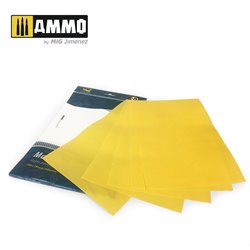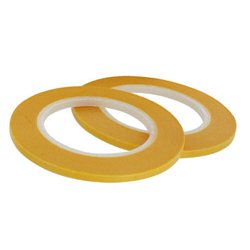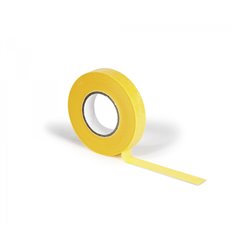Paint not only comes in different types (acrylic or enamel) but will also produce different finishes. These different...
Cart 0 Product Products (empty)
No products
Free shipping! Shipping
£ 0.00 Total
Product successfully added to your shopping cart
Quantity
Total
There are 0 items in your cart. There is 1 item in your cart.
Total products (tax incl.)
Total shipping (tax excl.) Free shipping!
Total (tax incl.)
Search Tips
How can I mask a model to create curves or spiral patterns?
When it comes to scale modelling, creating curves or spiral patterns on a model can add depth and visual interest. One technique used to achieve this is by utilising masking tape. Masking involves covering certain areas of the model to protect them from paint or other materials, allowing a modeller to create precise and controlled patterns. Let's have a look at the processes needed to achieve this:
- Plan the design : before starting to mask, it is important to have a clear idea of the curves or spiral pattern to be created. This could be aided by using direct visual reference sources, or by sketching out the required design on paper or by utilising specific computer-based drawing software. This will help to determine the areas that need to be masked.
- Gather the materials needed : to mask the model, the modeller will need to gather the most appropriate masking medium. This could be masking sheets or masking tapes of specific sizes. Some manufacturers create masking tape with narrow widths, such as 2 or 3mm. These are strong but also flexible enough to be laid down in complex spiral patterns, even on curved surfaces. Additionally, a sharp hobby knife and cutting mat are essential.
- Prepare the surface : ensure that the surface of the model is clean and free from dust or debris. This will help the masking tape adhere properly and prevent any unwanted paint bleed.
- Cut the masking tape : using a sharp hobby knife and a cutting mat, carefully cut the masking tape into strips or shapes that match the curves or spiral pattern that is required. Take time and make precise cuts to achieve the desired shape.
- Apply the masking tape : gently apply the cut masking tape strips or shapes onto the surface of the model, following the curves or spiral pattern as planned. Press down firmly to ensure that the tape adheres well and creates a tight seal.
- Paint or apply other materials : once the masking tape is in place, paint or other surface materials can then be applied to the model. Be sure to use thin coats and allow each layer to dry before applying the next one. This will help prevent paint build-up and ensure a smooth finish.
- Remove the masking tape : after the paint or other materials have dried, carefully remove the masking tape. Use a slow and steady motion to avoid any damage to the underlying surface. In the event of any paint-bleed under the masking tape, the modeller can apply light touch up with a fine brush and matching paint.
By following these steps, a modeller can effectively mask their model to create curves or spiral patterns. Practice, patience and a meticulous approach will inevitably be rewarded by a visually impressive and realistic result.
Posted in: Painting
Click here to receive the tips weekly in your mailbox. You can unsubscribe at any time.










